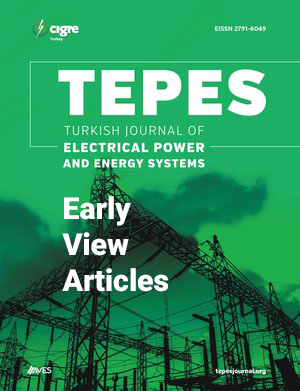Optimizing Maximum Power Point Tracking Efficiency: Fuzzy Logic-Based Adaptive Step Size Control in the Perturb and Observe Algorithm
Main Article Content
Abstract
This paper proposes an enhanced Maximum Power Point Tracking (MPPT) technique for photovoltaic (PV) systems by integrating a fuzzy logic controller (FLC) with a dynamically tuned step size. Unlike conventional methods, the developed approach utilizes the ratio of power and voltage variations (ΔP/ΔV) as the basis for adjusting the duty cycle through a customized fuzzy rule base. This design enables precise and stable tracking of the maximum power point (MPP) even under rapidly changing irradiance and temperature conditions. The algorithm was validated through MATLAB/Simulink simulations using a 100W PV module and a DC–DC boost converter. Two test scenarios were employed: one with stepwise irradiance variations between (0.2–1.0 kW/m²) and another with temperature shifts between (0–75°C). Results demonstrated that the proposed FL-based MPPT algorithm significantly outperforms the classical fixed-step P&O method. Notably, it achieved lower power ripple (0.05% vs. 0.4%), reduced overshoot (2.3% vs. 4.1%), and faster response time (0.1 s vs. 0.25 s). The findings confirm that the tailored FLC, governed by ΔP/ΔV-driven inference, offers a more robust and adaptive MPPT strategy suitable for real-world PV deployment.
Cite this article as: F. A. Omar, “Optimizing Maximum Power Point Tracking efficiency: fuzzy logic-based adaptive step size control in the Perturb and Observe algorithm,” Turk J Electr Power Energy Syst., Published online August 11, 2025. doi 10.5152/tepes.2025.25022.


